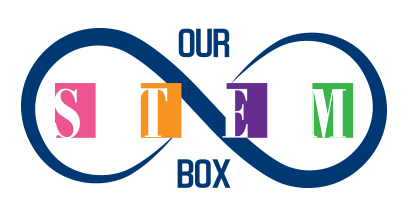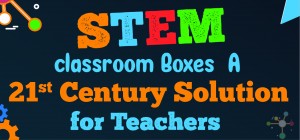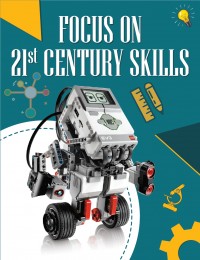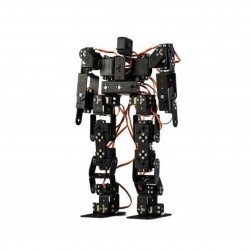-1140x400w.jpg)
The decision to establish Atal Tinkering Labs in Indian schools was a crucial moment for the Indian Education System. After various years of its inception, a plethora of students have now enhanced their technical, innovative, and entrepreneurship skills.
A lot of schools and other concerned parties still lack knowledge related to this initiative by the government. To help learn more, we have touched all major aspects of Atal Tinkering Laboratories in the subsequent sections.
What are Atal Tinkering Labs?
Atal Tinkering Labs or ATLs are dedicated workspaces in Indian schools where students (Grade 6th-12th) acquire innovative skills using equipment and components purchased by schools through the funds issued by Central Government of India. The vision of Niti Aayog is to nourish more than one million innovators in schools through this grand initiative.
What is Niti Aayog?
Niti Aayog or policy commission is Indian government’s think tank that was established to ensure, coordinate, and monitor implementation of sustainable development goals. One of the flagship initiatives by Niti Aayog is Atal Innovation Mission (AIM), which aims to promote entrepreneurship and innovation throughout India. And, Atal Tinkering Lab is AIM’s most prominent offerings.
ATL Establishment fund
Each selected school receives a fund of Rs. 10 lakhs from Niti Aayog to establish Atal Tinkering Lab in its premises. From this fund, the selected school has to use Rs. 7 lakh for purchasing ATL equipment according to the list issued by Niti Aayog. This has to be done within two to three months of receiving the grant.
Not more than Rs. 1 lakh should be used for buying a projector and laptop, in case it is not already present in the school. A maximum amount of Rs. 1.5 lakhs is designated for the refurbishment of the lab. This involves internet connection, electrical works, tables and chairs, storage boxes, etc. The remaining Rs. 50,000 are to be used for advanced prototyping equipment.
Operation and maintenance fund
Each selected school receives a fund of Rs. 2 Lakhs per year for operation and maintenance of the Atal Tinkering Lab. This fund can be used for:
Purchasing spares and consumables
Maintenance and repair of equipment
Up to Rs. 5000 per month as a payment of token honorarium to only one ATL-in-charge.
Inter- and intra-school ATL events, including ATL mentor sessions, ATL marathon, ATL Tinkerfest, workshops for students, guest lectures, competitions, community outreach, and training workshop for teachers.
Travel reimbursement for students and faculty for attending meetings, training programs, or similar events conducted by AIM
The fund cannot be used to pay salaries to lab assistant, faculty, ATL-in-charge, mentors, equipment vendors, and other similar parties.
Niti Aayog welcomes financial aid by different organizations to further enhance the operations of the lab. It has already collaborated with several groups, something we have discussed below.
Eligibility Criteria
A school is supposed to have an area of not less than 1,500 square feet for setting up the lab. The educational institutions in Himalayan states/hilly areas and Union Territories are eligible even if they have at least 1,000 square feet of space for this purpose.
To be eligible for ATL, a school must possess qualified and dedicated staff for Science and Mathematics. The number of students enrolled in grades VIth-Xth shouldn’t be less than 400 students. For the schools in hilly areas, there should be a minimum of 250 students in grades VIth-Xth.
The schools that are managed by the government body, local body, private societies or trusts can also apply for establishing ATL in their premises.
The school must have at least 75-percent attendance of teachers and students in the last three years.
Niti Aayog receives applications from schools from time to time. To check the status and to apply online, visit this link: http://aimapp2.aim.gov.in/index.php. It takes around 10 weeks and two rounds for the entire selection process.
ATL Equipment
Niti Aayog has divided equipment of Atal Tinkering Laboratory into four different packages based on their intended use. The list of components, along with the suggested quantity, that need to be included in these packages is also shared by Niti Aayog. These four packages include:
Package 1 (or P1): It includes components of robotics, electronics, sensors, and Internet of Things (IoT). Some examples include Arduino Uno, resistors, humidity sensor, triplex axis accelerometer, big sound microphone module, and servo motors.
Package 2 (or P2): The rapid prototyping tools, along with arts and craft kit are covered in this kit. Each school needs to have a 3D printer, its filament, a dedicated UPS, and a filament storage box. The specifications of 3D printer are also mentioned in the kit. Arts and Crafts accessories include glue, popsicle sticks, cardboard, rubber band, etc.
Package 3 (or P3): This category comprises electrical, mechanical and measurement tools. Some examples include hacksaw blades, flexible cutting mat, digital oscilloscope, soldering kit, hot glue gun, digital pen electric tester, digital vernier callipers, stainless steel ruler, etc.
Package 4 (or P4): Safety equipment, power supply and accessories are part of this kit. It includes bulb holders, power strip adapters, cable tie, nuts & bolts, safety mask, and safety pair gloves.
The comprehensive list, along with the quantity of each component could be viewed from here: https://aim.gov.in/pdf/ATL-Equipment-Batch-of-60.pdf.
Purchasing equipment for the laboratory
The government of India has made it mandatory to purchase the equipment for laboratory through its online marketplace GeM. The equipment supplier must be a registered vendor on this portal. The purchasing works through an open bid process in which various vendors can participate when bidding is done by a school. The vendor is chosen after technical evaluation of the participants.
Bank account for ATL
Each applicant (school) needs to open a separate bank account for Atal Tinkering Lab grants. The account has to be in school’s name in a bank with core banking solution (CBS) facility or a nationalized bank.
Advisory Body
Each school with an ATL needs to have an advisory body that monitors the operations of the lab. The body must have the following members:
A chairman: School Principal
Convener - Faculty-in-charge of ATL
Two members - Parents of the ATL students
Two members - Reputed academia, representative from local industry or local community, young innovators, or alumni of the school
The advisory body is supposed to conduct a minimum of three meetings per year. The reports with the details of the meetings are to be shared with AIM.
Innovations by the students
Unlike regular science or technology, these tinkering laboratories emphasize on solving problems of the communities. Some of the unique innovations by the students include:
Project Guru: A lamp that runs on gravitational energy
Herbal Anti-Pathogenic Bot
Portable Ayurvedic Water Purifier
Eatfit - A tool to check adulteration in oil
Low cost automatic floor cleaning mop
Travis-Technological Research Architecture for Vital Immoculate Sciences
Production of Hydrogen gas from sewage water using solar energy
Advance fire-fighting robots for high buildings
Automatic Elevated Future Transport System
Producing electricity through sewage waste
Competitions and marathons are conducted regularly to motivate the students to deliver something innovative in areas like agr-tech, waste management, clean energy, water management, etc.
Tie-ups with organizations and business groups
From time to time, Niti Aayog has tied up with different organizations and business houses to make its initiative more effective. For example, Niti Aayog collaborated with SAP to establish 100 labs in India. Another collaboration was with Adobe to spread digital literacy and enhance creativity among the students of Atal Tinkering Laboratory. It’s tie-up with UNICEF was aimed at skilling and empowerment of young children from every community.
Additional activities
To nurture a scientific temperament, the support of numerous activities are taken. Various competitions and exhibitions are being organized at regional and national level regularly. Lecture series and workshops help in enhancing problem-solving skills. The educational institutions often conduct screenings of films that revolve around STEM.
Mentor India
A strategic nation building initiative by Niti Aayog, Mentor India engages leaders that can mentor and guide school students in Atal Tinkering Labs in Indian schools. The leaders selected for this program are supposed to dedicate one-two hours of their time per week to inculcate design thinking, entrepreneurship, and computational thinking skills among students. The mentors are also expected to motivate students to create innovative solutions for problems that Indian society is facing at different levels.
Inclusions in equipment package by vendors
A vendor isn’t supposed to charge anything for installing equipment in the school. The ATL-incharge/faculty and principal are eligible to receive training on handling and usage of the equipment from the vendors.
The equipment (including 3D printer) should come with a two-year seller’s warranty. In case repairing of equipment has to be done, the vendor must provide a replacement till the time of repair. An additional comprehensive AMC of three years should also be included.
Atal Tinkering Festival
Niti Aayog conducts Atal Tinkering Fest to encourage the students indulge in ATL to showcase their innovative ideas. Individual students or the groups from participating schools need to identify a problem and offer a prototype to that solution using the equipment of their respective lab. The students also develop their entrepreneurship skills by creating a business around the solution and getting feedback from customers who are willing to purchase it.
Community Engagement
In case a student from a nearby school (non-ATL) or community wants to access the lab or is interested in working with the students of the concerned school, then the school is supposed to permit them. The school isn’t allowed to charge anything from them for this purpose.
Tinker Handbook
AIM has recently launched Tinker Handbook, a book that the students and teachers can use to match the objectives of ATL. The book was developed after receiving feedback about the programs from various members. It is available for free and can be downloaded from here: https://aim.gov.in/tinker-handbook-final-081117.pdf.
ATL Equipment by Robotech
Robotech Pvt Ltd, the parent company of Our STEM Box, is a registered vendor with Niti Aayog and GeM portal. The organization has already helped myriad schools across India in setting up and maintaining their Atal Tinkering Lab. This detailed blog is one of the efforts by Our STEM Box to help teachers in spreading quality education.
If you want to learn more about establishing or maintaining this laboratory in your school, feel free to connect with us.




1Comment(s)
I truly appreciate this post. I’ve been looking everywhere for this! Thank goodness I found it on Bing. You’ve made my day! Thank you again
Leave a Comment